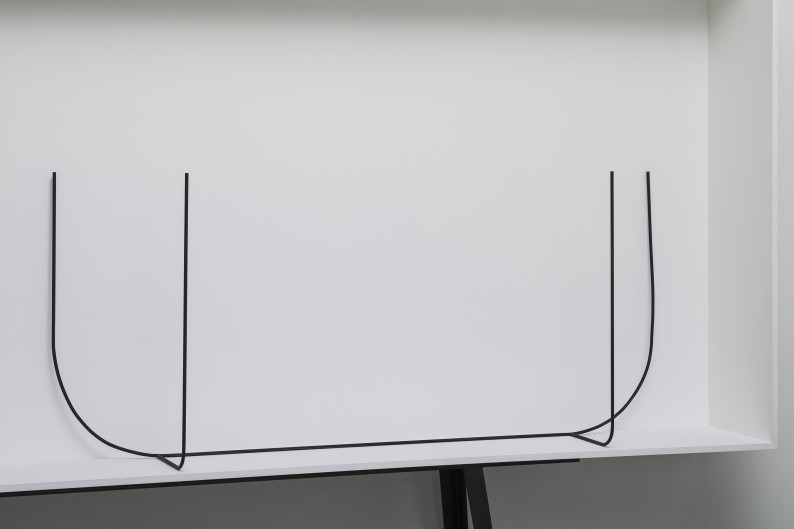Thea Djordjadze
all building as making
18 Sep 2021 - 16 Jan 2022

Thea Djordjadze. He ne sa tu to me., 2014 (Detail). Holz, Stahl, Gips, Farbe
© Thea Djordjadze / VG Bild-Kunst, Bonn; courtesy: Sprüth Magers
© Thea Djordjadze / VG Bild-Kunst, Bonn; courtesy: Sprüth Magers
Thea Djordjadze’s artistic practice can be understood as a process of continually reusing, reconfiguring and rearranging objects. From 18 September 2021, the Gropius Bau hosts an extensive exhibition of the Berlin-based artist’s work which will engage in a dialogue with the historic building.
Influenced in equal measure by historical artefacts and concepts of modern art and architecture, Thea Djordjadze’s sculptural works are characterised by formal ruptures and an idiosyncratic material aesthetic. By combining materials such as plaster, metal, foam, textiles, wood or papier-mâché, Djordjadze creates fragmentary spatial settings in which she reformulates the classic display – vitrine, plinth, framing and pedestal – as a recurrent theme in her work. Starting on 18 September 2021, the Gropius Bau will present an extensive exhibition of Djordjadze’s work in its spaces, among them the so-called Schliemann Saal, once home to Heinrich Schliemann’s excavated archaeological findings between 1881 and 1885. Existing and newly created works will engage in a dialogue with these historical spaces and past archaeological exhibitions at the Gropius Bau.
Curated by Julienne Lorz
Influenced in equal measure by historical artefacts and concepts of modern art and architecture, Thea Djordjadze’s sculptural works are characterised by formal ruptures and an idiosyncratic material aesthetic. By combining materials such as plaster, metal, foam, textiles, wood or papier-mâché, Djordjadze creates fragmentary spatial settings in which she reformulates the classic display – vitrine, plinth, framing and pedestal – as a recurrent theme in her work. Starting on 18 September 2021, the Gropius Bau will present an extensive exhibition of Djordjadze’s work in its spaces, among them the so-called Schliemann Saal, once home to Heinrich Schliemann’s excavated archaeological findings between 1881 and 1885. Existing and newly created works will engage in a dialogue with these historical spaces and past archaeological exhibitions at the Gropius Bau.
Curated by Julienne Lorz
